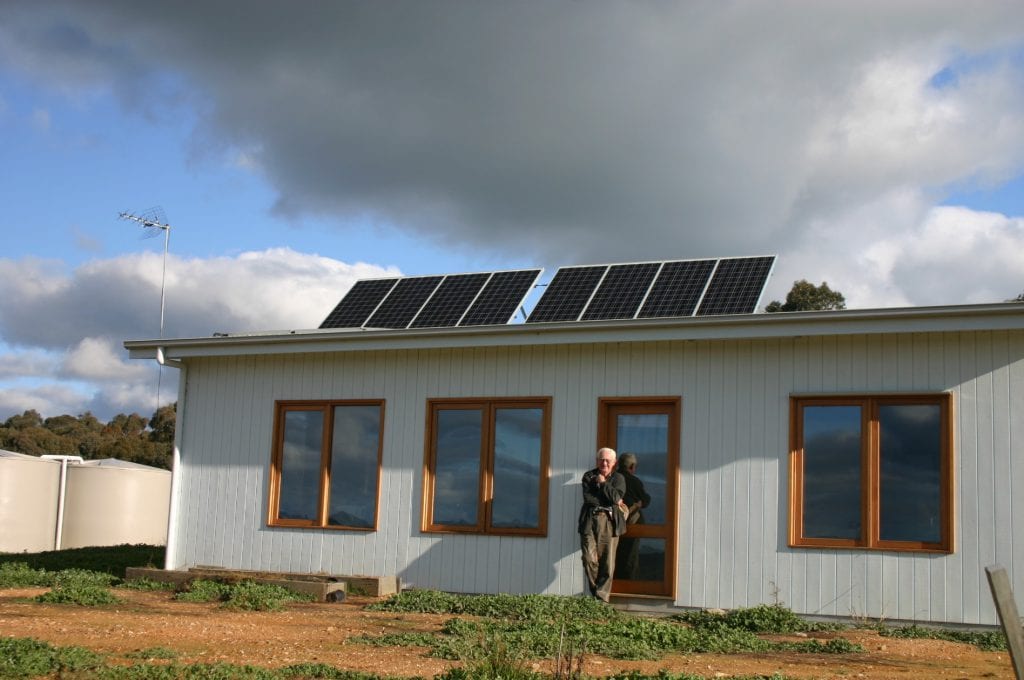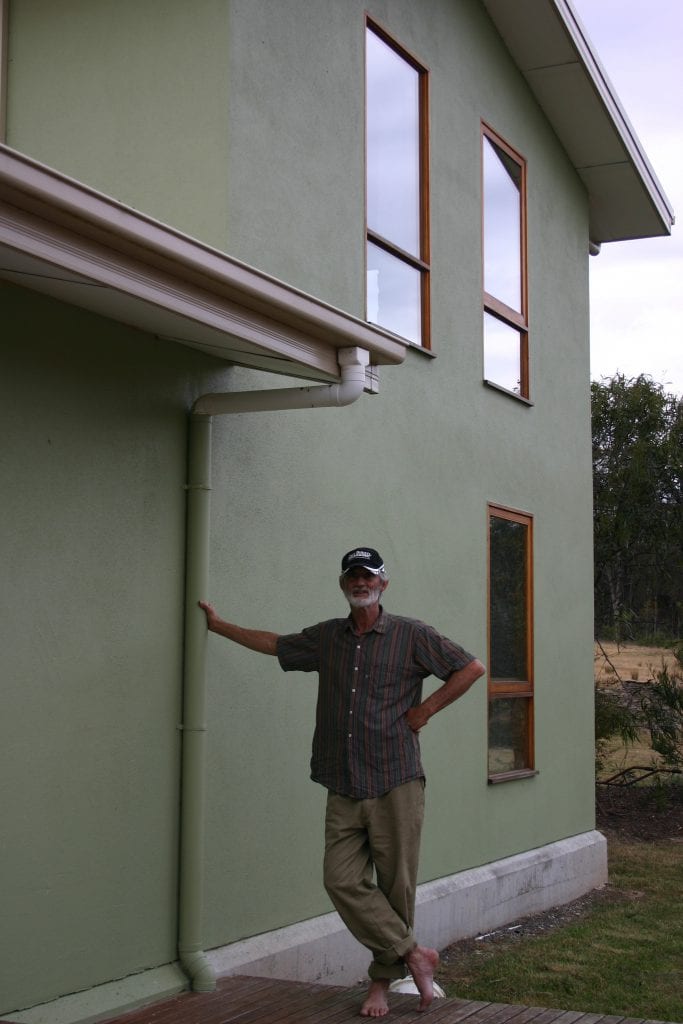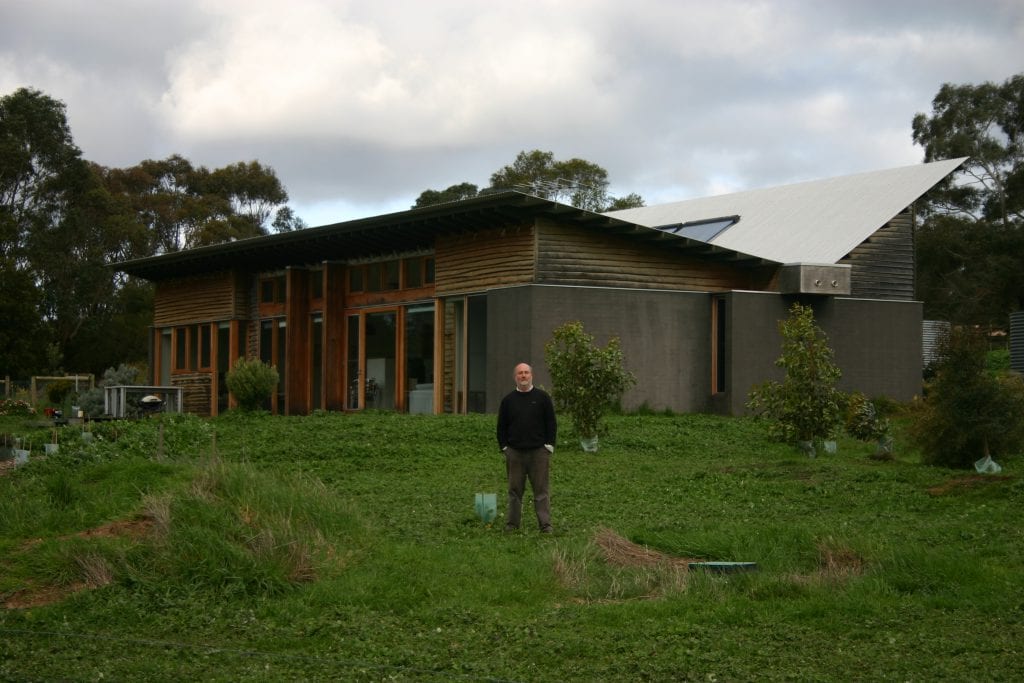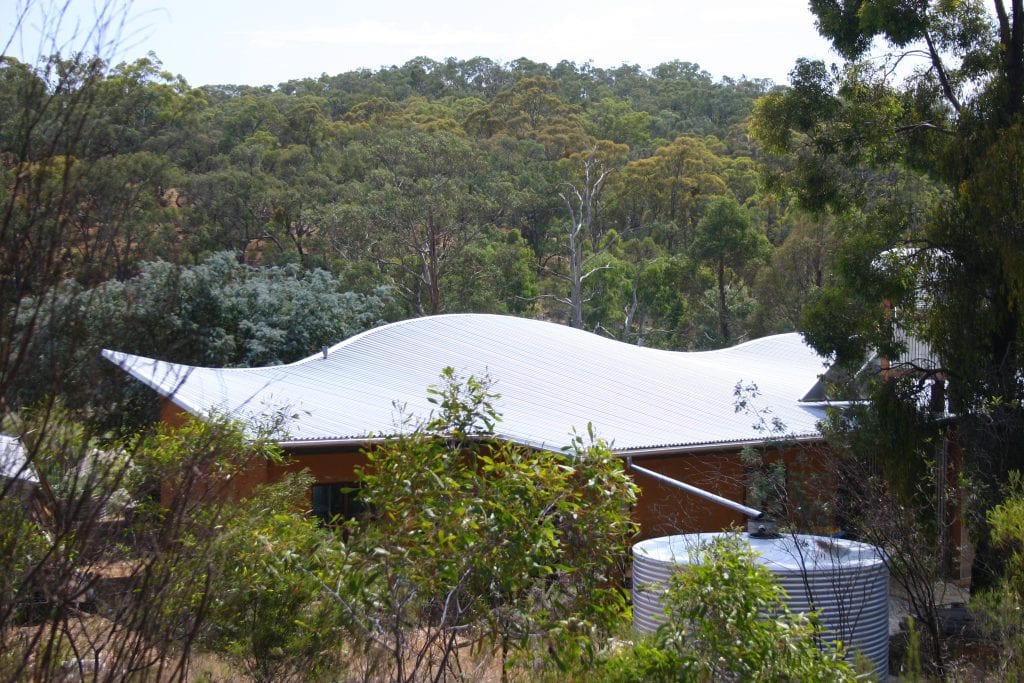ON BLACK Saturday February 2009 bushfires and 45 degree heat seared Victoria but inside John Morgan’s energy efficient home at Lexton it was 33.9C.
The energy efficient principles built into this northwest Victorian home means a comfortable temperature is possible in most weather conditions with no extra heating or cooling appliances.
Non-profit sustainable practises promotions group, the Alternative Technology Association, named the house as Australia’s most energy efficient in 2010.
John said a national CSIRO energy efficiency classification system gave the 80 square metre house design a nine out of 10 star rating.
In Victoria a six star standard is the benchmark for new residential buildings.
John, who is in his 70s, has extensively researched renewable power sources and since 1960 has been an enthusiastic supporter of solar energy.
Since he retired from fulltime teaching he has studied to become an energy efficient house designer and consultant.
John said he and wife, Belinda, bought their 8.09ha bare Lexton block in 2004 and the 129 turbine Waubra wind farm forms part of their district views.
They completed the 2-bedroom house with its office, lounge, kitchen, bathroom and “power room” in November 2008.
The building is oriented north east to capture maximum winter sun and avoid summer rays with extensive glazing along the face to allow the sun to heat the living area.
The main building material John has used includes concrete, a variety of insulation materials, double glazing and a laminated timber sheets for the exterior.
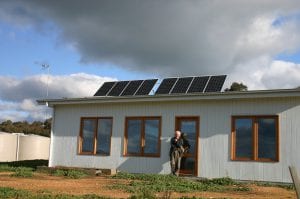
John said the concrete slab floor and also concrete blocks in the home’s internal walls are the building’s main solar heat banks.
John’s house is a brick veneer built inside out
“This is a brick veneer house inside out,” John said.
He said with concrete bricks as internal walls he avoided using plasterboard that didn’t absorb heat.
He said the trick was to trap and distribute solar heat so it created a uniform, comfortable temperature.
“The house is designed to be heated by the sun and it is so heavily insulated the loss of heat is small,” John said.
Sitting behind the internal brick walls is a sheet of silver foil insulation and R2.5* fibreglass batts wedged into the timber wall frame.
The external walls have sheets of 9-ply laminated timber painted a reflective white.
John said in the roof cavity he had used R4 batts between the joists.
Laid across the top of these there is a 50mm thick combined fibreglass and silver foil insulation blanket to give the roof an R6 rating.
John said many people were frightened about the cost of using double glazed windows.
“I got around the (double glazing) cost issue by using windows that were off the shelf size,” John said.
“If you get them made specially you pay more.”
John said energy efficient homes avoided temperature extremes and this was why he put double doors in the bedrooms to avoid barriers to air movement.
“There is a uniformity in the house so it is designed so you don’t walk from a high temperature area to a low temperature area,” he said.
After careful planning John enjoys comfortable internal temperatures in summer and winter
From John’s annual records the building’s internal daily temperature has averaged about 16C in winter and 25C over summer.
John said he was a former physics teacher but after work he was an “electronics tinkerer” who had always been an independent person, which fuelled his interest in self-sufficiency.
He said in his “power room” was a bank of 12 individual two volt cell batteries that stored 240 volts of energy collected from the two kilowatt capacity 12 solar panels on the roof.
The “power room” also has the home’s switchboard and an inverter that converts the collected energy from direct current to alternating.
He said once fully charged the battery bank would store up to about 25 kilowatt hours which was enough for his power needs for several days.
John said in the event of a spell of cloudy weather he had installed a gas outlet for a small heater and also had a generator.
He said as the temperature gradually rose inside the house between winter and summer he employed other cooling strategies.
Two separate but adjoining north facing windows are hinged so each can be opened to catch easterly or westerly breezes.
*R = rating and a higher number means better insulation.

